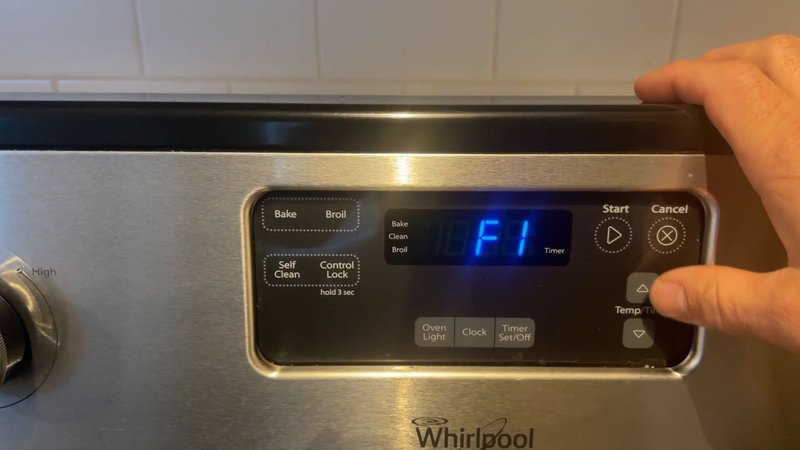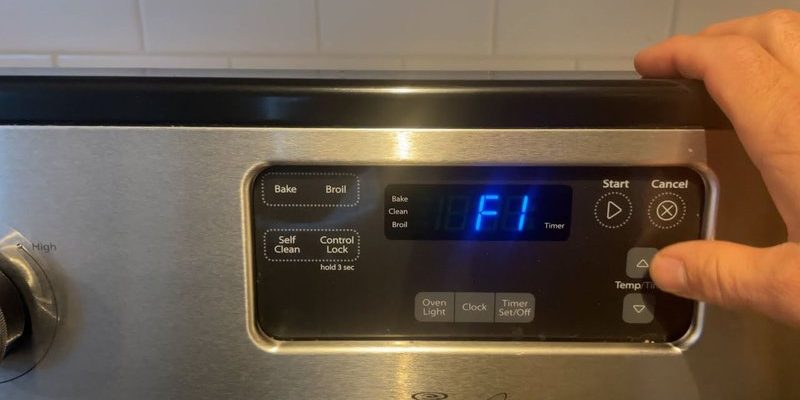
So, what exactly is error code F1? In many Whirlpool ovens, this code typically signals a problem with the oven’s electronic controls. Think of it like your oven getting a headache; it’s trying to tell you something isn’t quite right. This can be due to various reasons, such as a faulty keypad, a control board issue, or even a simple power glitch. Understanding these potential triggers and knowing how to address them is like having an umbrella handy before the rain starts. Let’s dig into how you can keep this pesky code at bay.
Understanding Error Code F1 and Its Causes
The error code F1 in Whirlpool ovens and ranges is like a smoke alarm that goes off even when there’s no fire. It generally indicates a malfunction in the oven’s electronic control system. The oven’s control board acts like its brain, and when something goes awry, the F1 code appears to nudge you to check things out. Common causes include a faulty touchpad or an electronic control that’s becoming as unreliable as a device with a dying battery.
One way this can happen is if the touchpad becomes defective. The touchpad, like the remote control of your TV, tells the oven what to do. If it starts sending mixed signals, the control board gets confused, and voila, the F1 error pops up. Another culprit could be an electrical glitch, much like a momentary flicker of lights during a thunderstorm, which can temporarily scramble the oven’s brain.
The electronic control board itself can also fail, especially in older units where wear and tear take their toll. Imagine a guitarist’s strings snapping after years of playing; similarly, the components in the control board might wear out, leading to miscommunication and ultimately, an F1 code. Knowing these potential causes helps you not only fix the problem but also take measures to prevent it.
Simple Preventative Measures To Avoid Error Code F1
Prevention, they say, is better than cure, and in the case of error code F1, it’s all about keeping your oven’s electronic components in good shape. Start by giving your oven’s keypad a regular once-over. Be gentle with it; pressing buttons like you’re playing the piano helps prolong its life. And just like your phone screen, keeping it clean and free of grease or food spills ensures it functions smoothly.
Regular maintenance can also be an ally in prevention. Think of it as a health check-up for your oven. Unplug the appliance occasionally, inspect the cords for any fraying, and make sure the connections are tight and secure. This simple act can help prevent those pesky power surges that could scramble the electronic control like a signal jamming the airwaves.
Another preventive tip is to keep the oven’s control board protected from power fluctuations. Consider using a surge protector. It’s like putting on sunscreen before stepping into the sun — it shields your oven’s sensitive components from unexpected voltage spikes that can cause the control board to hiccup.
When It’s Time To Call In The Professionals
Despite your best efforts, there may be times when the F1 error persists like a stubborn stain. That’s when you know it’s time to call in the experts. A professional technician can diagnose the issue with the precision of a detective solving a mystery, ensuring that nothing is overlooked. They have the tools and expertise to replace faulty parts, whether it’s a worn-out keypad or a frazzled control board.
Attempting to replace these parts yourself might seem tempting, especially if you’re a DIY enthusiast, but it’s akin to performing surgery without proper training. Mishandling the oven’s delicate electronics can lead to more problems than solutions, possibly voiding any existing warranty. Professionals can ensure the job is done right and safely, giving you peace of mind.
After the issue is resolved, ask the technician for maintenance tips specific to your model. Just like how your car needs a tune-up, your oven may need periodic checks, which they can guide you on. This information can arm you with knowledge, allowing you to better care for your appliance in the future.
Maintaining Your Whirlpool Oven for Long-Term Peace of Mind
Keeping your Whirlpool oven in tip-top shape is all about consistency and care. Routine checks and cleaning can spell the difference between a well-functioning oven and frequent error codes. Treat your oven like a valued member of your kitchen — one that deserves attention and a bit of TLC from time to time.
A clean oven performs better, just like a tidy room feels more inviting. Make a habit of wiping down the inside after use, and don’t forget the outside too. Clean controls and a clear display mean they’re less likely to hit a wrong note. Additionally, read through your oven’s manual. It’s like a map, guiding you on how to best use and maintain your appliance.
Finally, consider setting reminders to perform monthly checks on power connections and protective gear like surge protectors. These simple actions, performed regularly, can extend your oven’s life and keep error codes at bay. With a bit of ongoing attention, you can enjoy the convenience of your Whirlpool oven without interruption, confidently cooking meal after meal.
